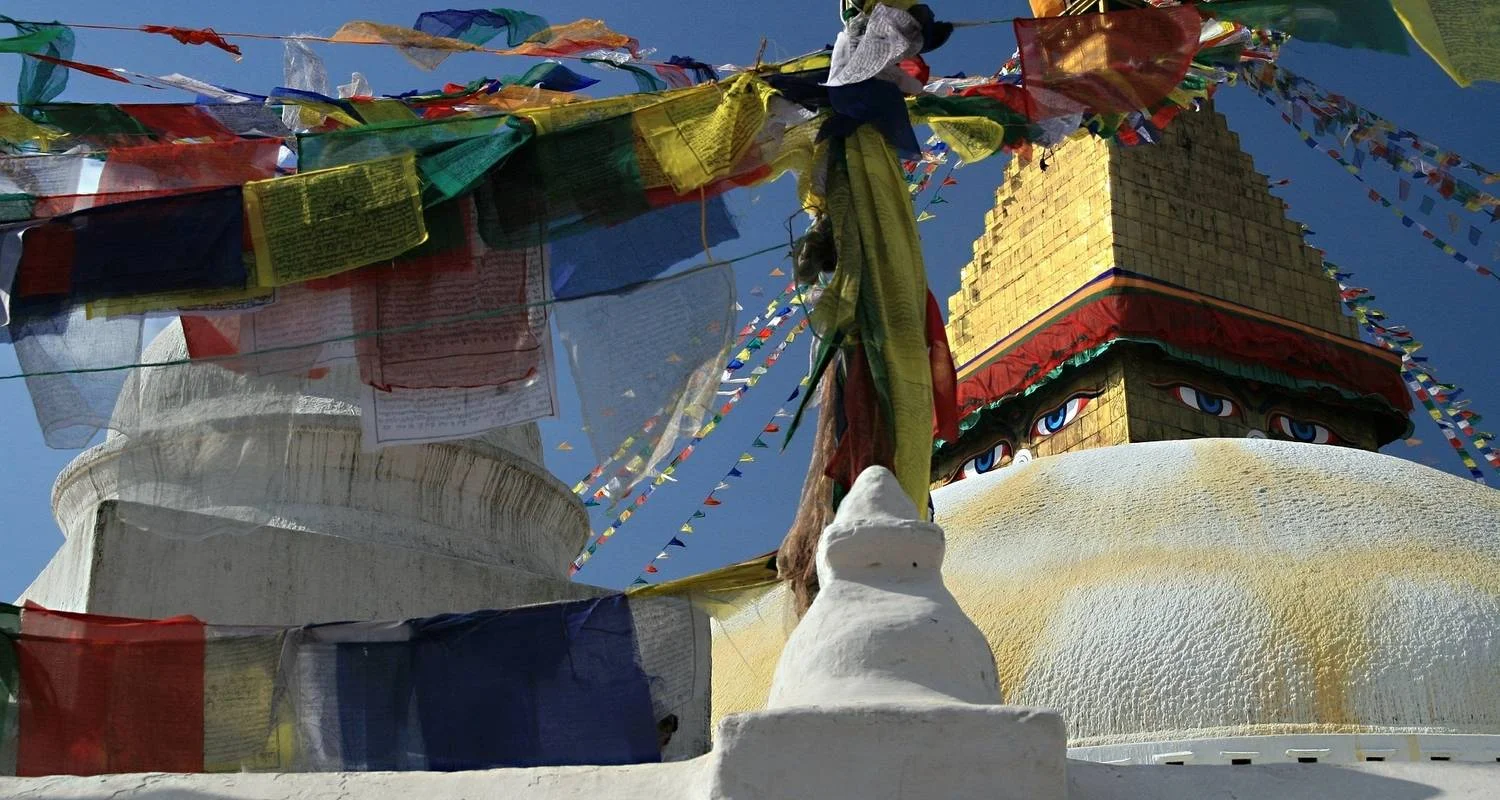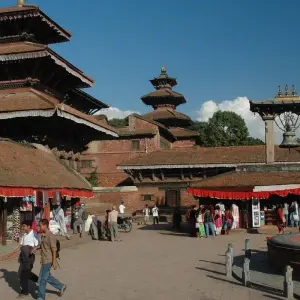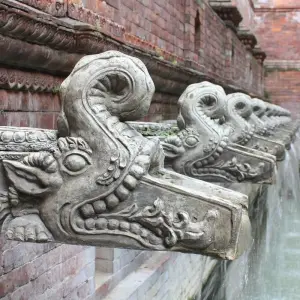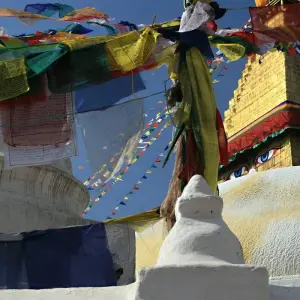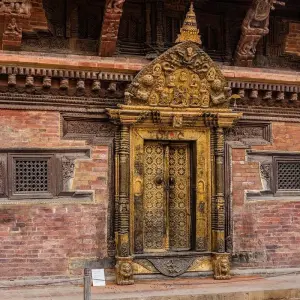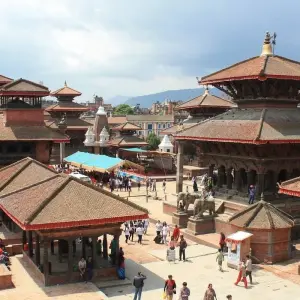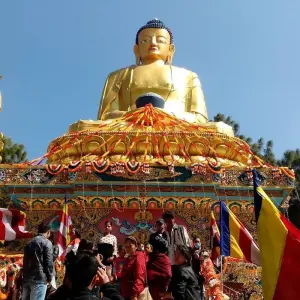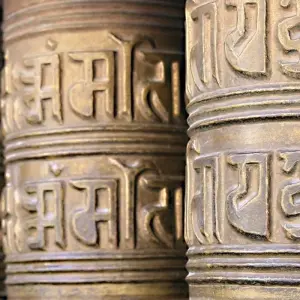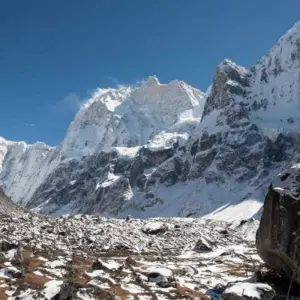План подорожі
Nepal’s second highest peak and the third highest in the world, Kanchenjunga is located in the northeastern corner of the Taplejung district. Its main ridges form a natural boundary between two states, as well as a watershed to several important rivers. Twelve miles north of Kanchenjunga is the Tibetan frontier. This runs along the main watershed of the Himalayas, separating the arid plateau of Tibet to the north and the more fertile and rain washed country to the south.
Kanchenjunga is a mountain of sheer beauty. It is great enough to posses its own glaciers radiating from its several summits. Though surrounded by many peaks, the glaciers which flow far down to the fringes of the tropical forests are the undisputed possession of Kanchenjunga. It is the only mountain that displays its glories to the world at large. Only those who can afford the time and expenses necessary to penetrate the remote fastness from which they spring can view the glories of Everest, but Kanchenjunga is to be seen easily from anyone in the lower foothills.
Kanchenjunga not only breaks the force of the monsoon, but protects the main watershed to the north from its onslaught to a great extent. The result of this is an extra ordinary variation of scenery and climate with in a small area. The dry, almost dusty hill at the head of the Lhonak Valley, The Dodang Nyima range and the plateau of Tibet beyond are in striking contrast to the valley that radiates southward from Kanchenjunga, for here is a dry reddish brown country with a snow level appreciably higher and glaciers considerably smaller than those of Kanchenjunga and its immediate neighbours. There is probably no other mountain where the mountaineer is exposed to greater dangers than he is on Kanchenjunga, for he not only has the ice avalanches to contend with, but general uncertain weather as well.
Roughly speaking, there are four main lines of approach of Kanchenjunga, up the valley of the Tamor river in Nepal, passing Ghunsa and Kangbachen, up the Yalung valley in Nepal, up the valley of the Teesta river in Sikkim, and up the Talung valley also in Sikkim. Between the Yalung and Talung valleys there is also the Rangit river, which has its sources in the glaciers of Kabru, 2400 feet, one of kangchenjunga’s out post peaks to the south. The span of Kanchenjunga area is 55% of the Taplejung district area and 1.40% of the total area of country. Its 65% area is covered by high Himalayas and mountain rocks and ice and remaining 45% is covered by forests, shrub-land, grass-land and agricultural-land. The climate of this area varies from subtropical monsoon at lower elevation to alpine in the higher areas.
Програма туру
Kathmandu
Початковий пункт
Tribhuvan International Airport (KTM) त्रिभुवन विमानस्थल, त्रिभुवन विमानस्थल, Kathmandu, Bagmati, Nepal
Kathmandu
Free day in kathmandu or sightseeing yourself. Kathmandu Valley includes several UNESCO World Heritage Sites, including Pashupatinath, Buddhist stupa in Boudhanath. We can also visit Swyambhunath, also known as Monkey Temple, built in 2000 years old. Finally, we can visit Patan, city of fine arts. In the afternoon, you will be meeting with your trekking guide and will check all the necessary things. Overnight stay in a hotel.
fly from Kathmandu to Bhadrapur
Teplejung to Khesewa
Today the trail first ascends to a ridge before dropping steeply through Shimu to a suspension bridge across the Phawa Khola, where there is a good swimming place. We then will climb to the Limbu village of Kunjari at 1700 meter and continue through wheat fields to a Gurung settlement on a 2240 meter high pass. From here we have our first views of Kanchenjunga. The trail enters the Kabeli Valley where we spend the next two days climbing up and down, in and out of ravines and over ridges. Today’s endpoint is in the village of Khesewa.
Trek to Phumpe Danda
Our trek continues through the Kabeli Valley, passing a few spectacular waterfalls. After descending steeply through rice terraces into a side canon, we cross the Khaksewa Khola on a long suspension bridge at 1540m and then climb back to Mamanke. This is a prosperous Limbu village with bhattis (tea shops), and a large school.
Trek to Yamphudin
This day will bring us a lot of jumping from stone to stone, as we first have to cross the Tenguwa Khola stream. We climb steeply up to a ridge marked by a chhorten and prayer flags. Going down from here to the Kabeli Khola will be another exercise of rock-hopping over boulders, treeroots, and intersecting stream channels as we head upstream. We then climb gently to Yamphudin, a mixed community of Sherpas, Limbus, Rais, and Gurungs. Overnight in tea house.
Trek to Lase Danda
Trek to Tseram
From the stream the trail makes a steep climb through bamboo forests to Chitre at 2920 meter. After arriving here the ascent is less strenuous passing through a forest of pines and rhododendron to a pond at Lamite Bhanjyang (3410m). From this ridge we follow a steep set of switchbacks leading downhill through damp orchid-filled forests, crossing streams and isolated clearings used by herders. We stay above the wild river and follow it upstream to Torontan, where there are a few campsites close to the river or a little further ahead near a few caves. Continuing on, we reach to Tseram, where we stay the night.
Trek to Ramche
A rocky loose path follows the stream and climbs up to some mani walls (stones carved with Buddhist prayers). Rathong (6678m) and Kabru Dome (6700m) loom at the head of the valley. Climbing further alongside the moraine of Yalung Glacier to where the valley opens up as we approach Yalung at 4260m. Our trek climbs further along the moraine to a lake and a big meadow at Ramche. The view is dominated by the spectacular peak of Rathong. Herds of blue sheep live on the cliffs above our campsite.
Trek to Lamite Bhanjyang
We follow our way back along the Simbua Khola to a campsite at Lamite Bhanjyang. There is a pond nearby at 3410m, which is a nice place to set up camp, although sometimes there may be a water shortage there. Overnight here.
Trek to Yamphudin
The first part of the trail goes along the bank of the Simbua Khola. You have to walk through a dense jungle. On the way, you can see the effects of a landslide. The trails normally ascend up to Lamite Bhanjyang and then descend to Yamphudin, crossing a small river. Yamphudin is a mixed community of Sherpas, Limbus, Rais, and Gurungs. Among the corn and rice fields of the village, there is a school and some shops with minimal supplies. Overnight in Yamphudin.
Drive from Yamphudin to Ilam Bazaar
After breakfast, we take a jeep ride from yamphudin to Ilam Bazaar. You will find the sceneries here to be spectacular and the people to be kind and hospitable. Overnight in a guesthouse.
Ilam to Bhadrapur then fly to Kathmandu
Kathmandu
Кінцевий пункт
Tribhuvan International Airport (KTM) त्रिभुवन विमानस्थल, त्रिभुवन विमानस्थल, Kathmandu, Bagmati, Nepal
Політика скасування
when tour is book then payment is refundable subject to administrative cost at 10% of the tour cost.
· Between 30 to 60 day in advance, is subject to deduction of 20% from the tour cost.
· Between 20 day and 30 day in advance is subject to 30% deduction on the tour cost.
· 15 days to 20 day in advance is subject to deduction of 50% on the tour cost.
· In less than 15 days shall be liable to no refund of the tour cost, full amount shall be forfeited.
Деталі туру
Розміщення / проживання
- Three nights accommodation in 3 star category hotel in Kathmandu
- 10 night 11 days stay in lodges in the Trekking
Транспорт
- Arrival and depature trasports by private vehicle
- Bhadrapur to Taplejung trekking poit by Local jeep
- Yamphudin to Ilam by local jeep and Ilam to Bhadrapur
Страхування
Додатково
- Extra night accommodation in Kathmandu USD 50 for double bed room and USD 45 single bed room with breakfast.
- If you need sightseeing in Kathmandu the city's several UNESCO World Heritage Sites it will cost USD 50 per car.
Переліт
- Kathmandu to bhadrapur and Bhadrapur to Kathmandu by flight
Опціонально
- Trekkers’ Information Management System (TIMS) fees
- Kanchenjunga National Park permit and Kanchenjunga restricted area permit (need 3 photos for the permits)
- Equipment & clothing for porter & staffs
- Equipment (sleeping bag, first aid kit, oximeter, map, etc.)
- Insurance for all staff & porters.
- pre-trip meeting in kathmandu before the trek
- Trekking achievement certificate is provided
- Free one Adventure Himalayan T-shirt
Опціонально
- Nepal visa - Multiple Entry 30 days - USD 50 (Details in Visa Page)
- International flight
- Sightseeing in kathmandu
- Insurance for clients (i.e. helicopter evacuation, etc.)
- Lunch & dinner during hotel stay in Kathmandu
- Alcoholic drinks, candies, etc.
- Personal gears & clothing (available on hire)
- Tips for Guide and Porter
- Any expenses incurred in emergency evacuation/road block due to any reason, table drinks, snacks while walking.
Харчування
- Breakfast included in kathmandu Hotel
- Breakfast, Lunch and Dinner include on the trekking
- Farewell dinner in Kathmandu with Nepali cultural dance
Гід
- Experienced and helpful trekking guide (trained by Ministry of tourism)
- Porter carry maximum 20 k.g and one porter between two person
Потрібно знати
Валюта
Nepalese Rupee
Непал
Відгуки клієнтів
Загалом
Маршрут
Транспорт
Проживання
Харчування
Оператор
Поширені запитання
Ви можете замовити тур на нашому сайті, обравши потрібні дати та натиснувши кнопку «Підтвердити дати». Ви також можете зв'язатися з нашим відділом продажів по телефону або електронною поштою.
Ми приймаємо кредитні картки, банківські перекази та інші популярні методи оплати.
Так, можливі зміни або скасування, однак залежно від часу до початку туру можуть застосовуватися штрафні санкції.
Для відвідування країн за маршрутом туру вам знадобиться паспорт з дійсною візою (якщо потрібна).

